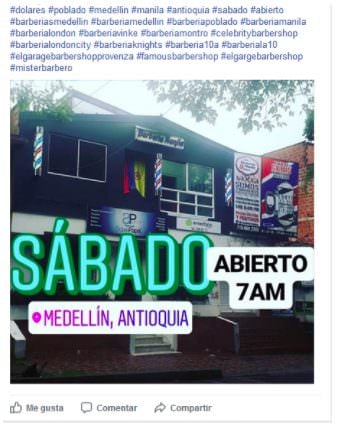Many local businesses worry that as great as the internet has been for society, it is also allowing large companies to consolidate their control of local markets around the world. And while it’s true that without the internet we would not have companies like Amazon, the internet doesn’t have to be a death sentence for your local business.
More than 4 out of 5 consumers have searched online for local goods and services online. And according to Shama Hyder on Forbes.com, 61.2% of survey respondents said they would be willing to pay higher prices to support small business.
What is killing local businesses isn’t the existence of the internet, but either their lack of willingness or know-how to implement effective local digital marketing. Today we’re going to try to resolve at least one of those, hopefully both.
Many traditional online strategies still apply to local marketing; the key is applying each with a local twist to maximize your ROI.
Local Marketing vs Global Marketing
A lot of digital marketing advice is geared toward global marketing. Even if your customers are only in the US or Europe, you’ll still be applying “global” marketing. But if you are a local business that specializes in offering goods and services to your community, there is no reason you need to be recognized globally, or even nationally.
Trying to achieve that will dilute your efforts, wasting time and money. What’s worse, if you focus on too broad of a market, you may end up hurting your local success.
Local marketing is all about building a presence in your community. You need to be found where your actual customers are living and looking. For example, you don’t need to rank for “antique book store” to reach your local customers. Instead you should target “antique book store in Philadelphia.”
Not only will this be more relevant to your customer base, but it’s a much easier challenge to tackle without an army of content marketers.
Just like with global marketing, there are tons of channels and options you can use. Today we’re going to focus on the big three — Social, SEO, and Paid Advertising.
Social Media
A lot of local businesses give up on social media because it feels like a massive waste of time, but usually the problem is just that they’re attacking it haphazardly. But if you are deliberate in your efforts, it can be one of the quickest and most effective local marketing channels out there.
Identifying the right channels
Every business needs a Facebook page, right? Wrong. While it won’t hurt most businesses to set one up quickly, just because Facebook is the largest network on the web, doesn’t automatically make it the best.
Start by developing strong buyer personas and then identify where those ideal customers spend their time online. For example, if you are targeting a younger demographic, you may find Snapchat and Instagram much more effective than Facebook. If your customers are into handicrafts and DIY projects, Pinterest is probably the network for you.
To help you figure this out, Sprout Social put together this handy report breaking down the demographics of the major social platforms.
Show your personality
With social media, your goal is always to build a personal relationship with your customer base. With local business, it’s even more important since your customers will likely be dealing with you or your team personally at some point.
Don’t be afraid to make jokes and be informal. Post team selfies and show customers behind the scenes of all the work you do. Whatever you do, make sure to keep your brand consistent. If you’re going to be vulgar, own it. If you’re going to be family friendly, keep that in mind whenever you post new content.
Provide value
This is where a lot of businesses screw up their social strategy – big and small. Nobody wants to follow your Facebook to get their feed full of more advertisements. Instead, make sure you post interesting or useful content.
When we met, my barber in Colombia was constantly posting nothing but stuff like this…
Nice to know, but you posted the same thing last Sábado (Saturday) amigo. It’s also under your business information and easy to find when I need it. I wanted to like the page in support, but it got annoying quick.
Now I’m not sure if my broken Spanish was enough to convince him he could market his Facebook better, but when I looked today I noticed some much better content…
(If you’re ever in Medellin, these guys will get you fixed up proper for <$5)
This shows customers what service they can expect as well as a more personal look at who they will meet when they get there.
Share resources that will make your customers’ lives better. If you don’t have the time or budget to create your own, go out and share helpful things you find online. You can also post entertaining content about you and your customers–anything that will make people smile and be glad they’re following you.
The goal is not likes, those mean very little in the big picture. Just make people’s lives nicer. If they share your content, even better! But that’s an added bonus.
Build community
They aren’t called social networks for nothing. Your social pages should be a place for your customers to connect with you and fellow customers.
You can do this by asking questions or posting polls to get their input. Customers love to feel included and a part of the story–few things can do more to foster loyalty. Similarly, post pictures with your customers and reshare their posts to show them you’re paying attention (and get free content).
Companies like Pixlee make it easy to incorporate your fans’ social content on your website automatically by tracking tags and mentions.
You should also use your social media to maximize your community building efforts offline. A great local marketing strategy is to sponsor community events, volunteer, or donate products to local causes.
Whenever you do this, make sure to share it on your pages and encourage your followers to get involved too. Part of the reason people are willing to pay more to support small businesses is that they believe the money is more likely to come back into the community.
Contests and special promotions
These can be a great way to grow and strengthen your social following or to turn social followers into email subscribers.
Host giveaways to encourage customers to share your page. Hold photo contests to get them to promote your brand on their own pages. Offer special follower-only promotions to add value to your fan club.
These can be easily run on your own if your following is small enough, but there are a few tools out there that can help you manage them. Raffecopter, Votigo, Strutta and KingSumo are some of the most popular. Each is a little different, so you’ll want to check them out and decide which is best for you.
Local SEO
You should also make sure you have an online presence independent of social networks where customers can find and learn more about you. These days, setting up a site is easy and cheap with services like WordPress.
88% of consumers used their phone to look for local goods and services and 50% of consumers that conducted such a search visited a store within 24 hours. That’s why it’s critical to be easily found online.
Blogging
While it’s not essential to have a blog on your website, it will help you rank in search engines and be found by interested shoppers. It will also show off your expertise and interest to visitors, making them more likely to become paying customers.
The most effective blogs post consistently and follow the same guidelines laid out in the social section above.
For more direct access to your customer base, you can get them to subscribe to a regular newsletter where you can send them new articles, as well as special promotions and offers. Just remember to keep it more value-offering than sales.
Local keywords
40% of all mobile searches on Google have local intent.
That is why it is so important to make sure your website is targeting local keywords. Often that can be as simple as taking a regular keyword and making it long-tail and more targeted by adding “in Orange County.” But it could also include targeting local events or slang.
Let’s say you offer limo and party bus services in Miami, you may want to target terms like “party bus for ultra music festival” in addition to “party bus in Miami.”
Local directories
Search engine results aren’t the only way to be found online. You should also make sure to register with any relevant local directories. Common examples include Google Maps, Bing Places, and Yelp.
Customers are familiar with these sites and trust them. Having a complete profile with your address and contact information will make it easy for your customers to find you. In addition, if your information is consistent across these pages, they may actually help your website rank higher in local search results.
Reviews
Most of these directories also have review systems. While you shouldn’t annoy or pester anyone to leave you a review, try encouraging happy customers to leave a comment. These reviews have been shown to positively boost SEO efforts.
They also make customers way more likely to give you business after they find you. 88% of consumers said they trust online reviews as much as personal recommendations.
If you do end up with a negative review, make sure to respond to it. Some directories allow owners to respond directly. Always apologize, even if it wasn’t your fault. If you feel like the customer is truly misrepresenting their experience, include an explanation below your apology.
Even if you can’t respond, make sure to address the problem in your business and eventually recent positive reviews should outweigh one negative.
Paid advertising
Another great thing about the internet is that it lets businesses run targeted advertising for as little as $10 a month. But you need to spend your money wisely.
Target geographically
The biggest mistake you can make is forgetting to restrict your ads to your local markets. 2 out of 3 consumers want their advertisements customized to their location. Give the people what they want!!
Additionally, running ads for your Cleveland store in Portland is nothing but a waste of money. No one that clicks on your ad will be swinging by anytime soon.
In addition to targeting local keywords, both Facebook and Google let you target customers by geographic region down to the ZIP Code. Do it.
Groupon and similar services
While you might need to pay to advertise your business on sites like GroupOn, I included it here because they will charge you a fee for every customer they refer.
One report sponsored by Wanderful Media stated that 59% of individuals surveyed have gone into a business as a result of a coupon they found online, so it’s worth trying out.
Make sure not to cannibalize your business though. If the GroupOn offers aren’t increasing your number of new customers or total profit, they may not be worth it. Sometimes customers that would have come in at full price will start hunting for deals if you become well-known for offering them.
Now, get kickin’
Local Marketing isn’t all that different from any other digital marketing campaign. But with the right emphasis on your target market, you can maximize your results and cut down on costs dramatically. That’s how you compete with the big guys who aren’t taking the time to cater to your community.
With 77% of Americans now owning Smartphones (and 91% of adults below 29-years), your online presence and local discoverability is only going to become more important in the years to come. So get kickin’!



